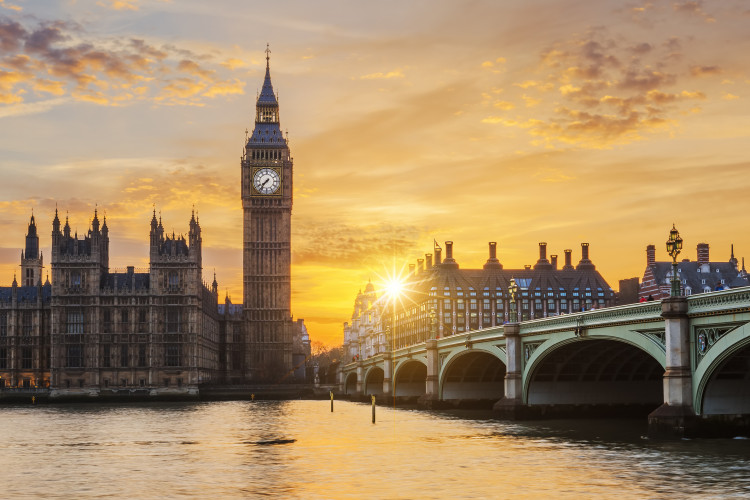Taking the temperature of the Tory party pre-Christmas is to delve into a world of pain. Speaking off-the-record to old friends, our staff find it hard to come across anyone showing any seasonal good cheer.
Is there anything that can go right for them?
Backbench criticisms doing the rounds include:
We have been promised new anti-strikes legislation all year, so where is it? Why have we still not got a grip over illegal immigration across the Channel? We have no mandate now Boris has gone, so how come Rishi is putting up taxes?
The key question, therefore, isn’t whether the Tories remain divided or demoralised. Far more interesting to ask: is there anything that can go right for them in 2023?
Weathering the Winter of Discontent
An answer to that must begin with the current strikes. Nobody knows who will get the blame for the disruption facing the public and those running businesses.
The Conservatives hope it lands somewhere other than with them. Or, alternatively, that this winter proves a one-off and is forgotten by the time of the next general election – the timing of which is in Rishi Sunak’s gift so long as it’s held before the end of January 2025.
So far, there are mere straws in the wind as to how this will play out.
Ministers believe rail union boss Mick Lynch to be vulnerable in terms of public support, having recommended that his members reject a 9% pay offer over two years, similar to one accepted by Unite and seemingly by the TSSA. They point to evidence of declining support for the strike from the RMT membership and pray the action will begin to fail as Lynch’s members suffer lost pay over the festive period.
As for the nurses: their 19% pay claim is one which Shadow Health Secretary Wes Streeting says he would reject. As with the railway workers, the Government’s hope is that the nurse walkouts simply don’t go on too long, but are instead undermined by the brute fact that, for strikers, striking is an expensive business. Something that union members may feel all the more keenly at Christmas.
If the strikes do fizzle out or get settled at low-cost, as Ministers hope, what then? There is no naivety amid Tory strategists.
Even if inflation falls beneath 5% in a year as forecast, that does not mean all prices which have gone up of late are headed back down. It means that the nation will be learning to live with a new higher cost base.
Given wage growth in the private sector has been higher than in the public sector for some years already, the new higher prices imply a risk of continuing labour shortages in taxpayer-funded jobs. Problems in the NHS and elsewhere could then prove intractable.
All the Prime Minister can do against this backdrop is dig in and hope to show bits of progress on separate fronts.
Aiming for Small Victories
Right now, his tick list consists of getting the Northern Ireland Protocol dispute with the EU sorted by February, paving the way for a Biden state visit in April. Plus making some inroads against cross-Channel illegal immigration with the plan unveiled on Tuesday. And then being able to show a gradually improving situation in public services, including the NHS, before the year is out.
Whether or not that list underwhelms, the other flame keeping the Tories’ hope alive is their belief that support for the Labour party is shallow and likely to prove temporary.
There are bits of evidence to sustain this belief in disparate polls. One in The Times yesterday predicted a Tory wipeout – but also showed around a quarter of 2019 Conservative voters classing themselves as ‘Don’t Know’ over voting intention, rather than abandoning Sunak’s party in favour of Starmer’s.
Other polling evidence shows the share of 2019 Tory voters planning to vote Labour down 5% in a week, to 12%.
Focus groups seem willing to give Sunak a chance. Participants repeatedly show they don’t want oratory from the PM, but a focus on fixing problems. All of which tallies with exactly the approach being planned.
There is backbench restiveness about the Reform party, UKIP’s successor. Nigel Farage continues to toy with everyone over whether he might return to frontline politics at its helm.
It was fear of his UKIP which prompted David Cameron to call the 2016 Brexit referendum. Sunak’s team appears unrattled, by contrast, predicting most of those flirting with Reform will eventually swing behind the Conservatives, especially if Sunak can show progress over illegal immigration. A potential reshuffle to shake up his top team – and help keep Ministers in line - may also be on the cards.
In short: those charged with plotting the Conservatives’ future think they have the outline of a workable plan and some chance of it succeeding. One of their tasks for 2023 is convincing their own side that this is so.
Labour Prepares
The argument against Keir Starmer is well-rehearsed: critics say he’s charisma-free and too slow to give voters positive reasons to back Labour.
Yet, at the very least, Starmer has done enough to ensure the Opposition benefits from its own “dullness dividend”. Voters distraught at the Tories’ performance now feel at-home enough with Labour to continue awarding the party a poll lead of around 20%.
One of the big questions right now is whether that lead will erode ahead of the next general election should the domestic economic situation ease, as many forecasters insist it will.
Keen to shore-up support, the folks around Starmer know that dullness won’t be enough. So for 2023, their aim seems to be directed at policy-making, in the hope of generating excitement, and maybe endorsements from the business community and expert stakeholders.
Manufacturing a Manifesto
In process terms, that means a National Policy Forum (NPF) running from late January until part-way through February. Businesses hoping to influence that can do so only indirectly, by getting to relevant frontbenchers and making a strong enough case for them to press.
Once NPF work is complete, it will be filtered, edited and added to by a senior team which will set to work on the general election manifesto.
That team includes Blair-Brown era advisors Deborah Mattinson and Peter Hyman, supplemented by the likes of Policy Director Ravi Athwal and former campaign manager Morgan McSweeney.
Shadow Climate Change Secretary Ed Miliband, a font of ideas for Starmer, is likely to remain heavily involved. Similarly, Shadow Chancellor Rachel Reeves will remain in charge of costings and – one suspects – something close to a veto if the numbers for any measure look ugly.
The earliest visible bits of policy movement come 2023 are likely to be on immigration, childcare and skills. Remarkably, we hear suggestions the early-2023 programme may also include something on Brexit, given recent polling evidence of some buyers’ remorse among Leave voters.
Rumours of Change
A shadow cabinet reshuffle is likely before halfway through the year, setting up a refreshed team to take over portfolios in government. While there are different rumours about who might be most vulnerable, there is more clarity over the rising stars.
Tipped for promotion are Shadow Northern Ireland Minister Peter Kyle, Shadow Financial Secretary James Murray, Shadow Health Minister Liz Kendall and Shadow Police Minister Sarah Jones. Also drawing plaudits in their current roles are Shadow Business Secretary Jonny Reynolds, Shadow Chief Secretary to the Treasury Pat McFadden and Shadow Justice Minister Ellie Reeves, the sister of the Shadow Chancellor.
As for Starmer himself: right now, it is hard to see anyone other than him leading Labour into the next election. This makes some New Labour types grit their teeth.
They would prefer either Shadow Education Secretary Bridget Phillipson or Shadow Health Secretary Wes Streeting. The latter’s weekend Telegraph interview has them sighing over memories of the boldness once shown by Tony Blair, because Streeting dared to criticise the British Medical Association, demand NHS reform and state he would not grant the nurses’ 19% pay demand were he in office.
Others aren’t pining and welcome the stability atop the party. Business representatives have been flocking to Labour events of late and there are reports of donations surging.
None of that, though, makes the core task any easier: how to create a compelling policy proposition that the Tories can’t steal and which costs almost no money? With the national debt at £2.4 trillion, it is a more difficult question than New Labour ever had to face.






